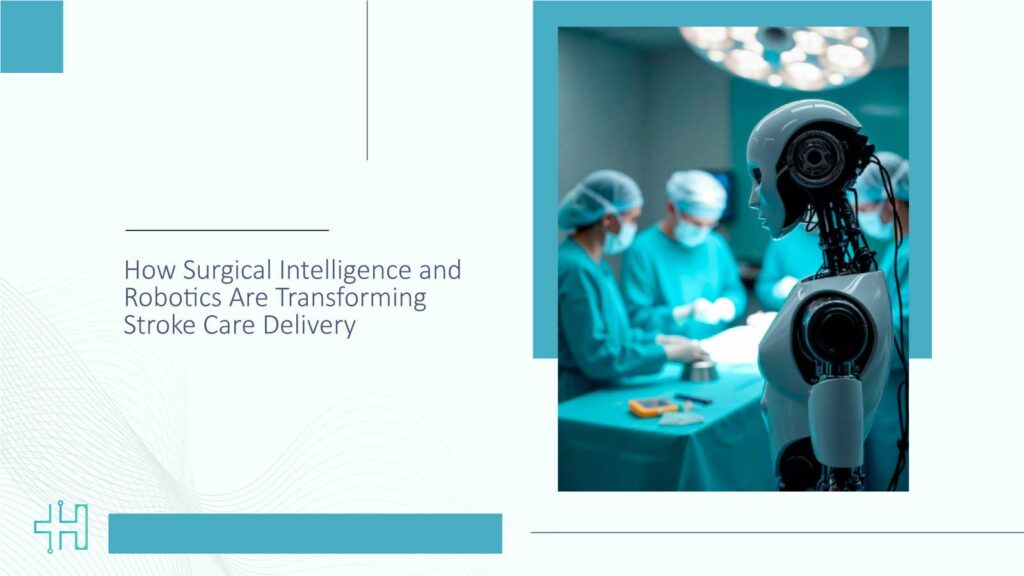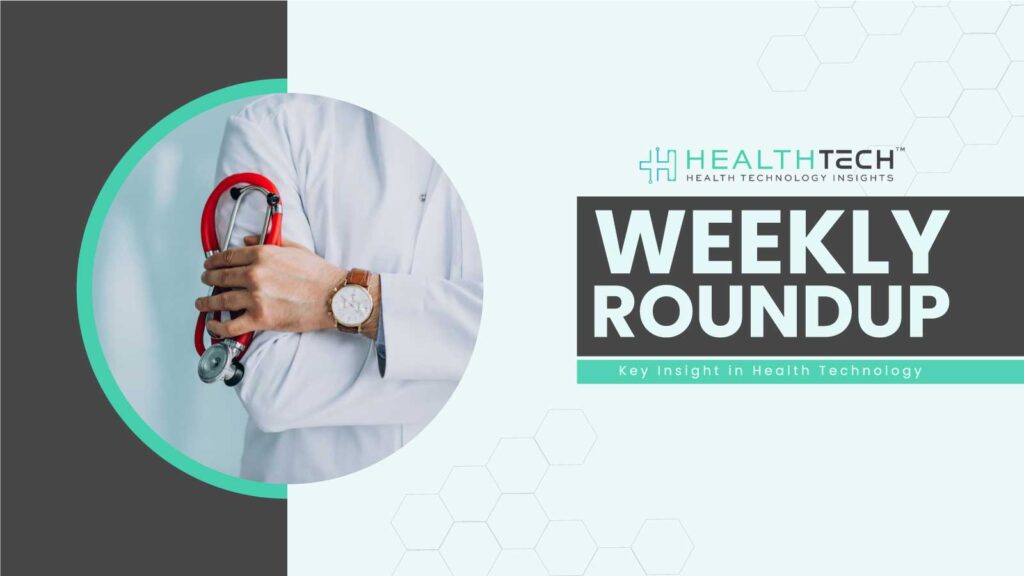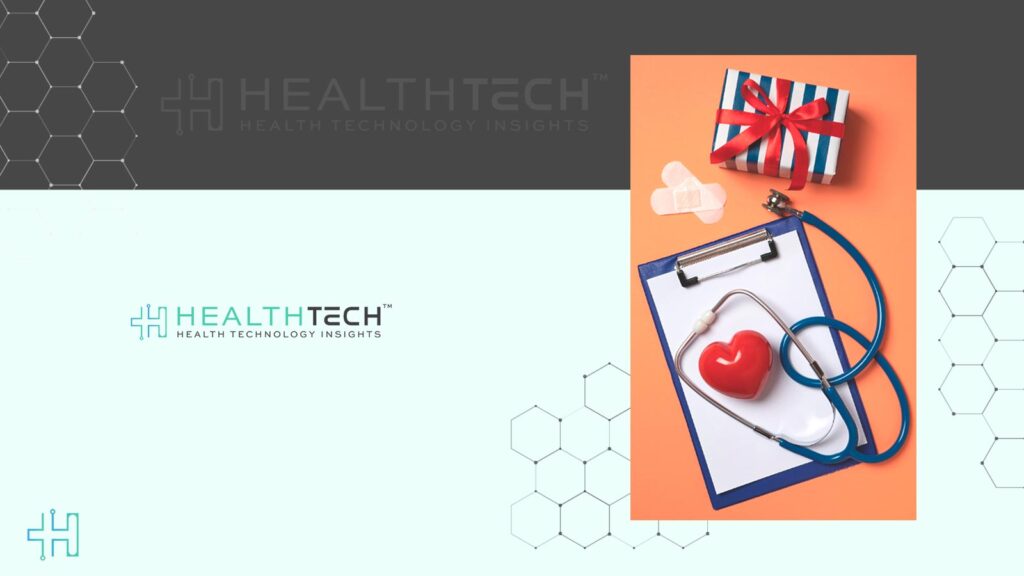A moment we’ve all heard about, or maybe even lived through, is when someone suddenly collapses without warning. A stroke. And just like that, the clock starts ticking, because the brain loses nearly two million neurons every minute. This is exactly where surgical intelligence begins to show its life-saving potential, by helping clinicians act faster, smarter, and with the kind of precision that can preserve both brain function and quality of life.
Now imagine this: a robotic arm in a hospital operating room is gently guided by a skilled stroke specialist who’s not even in the same building, state, or country. They’re connected via live video, precise data feeds, and smart software that remembers what worked best last time, and what didn’t.
This is the direction stroke care is heading, thanks to advances in surgical intelligence and robotics. In July 2025, that future came one step closer when healthtech firm Proximie teamed up with U.S.-based Imperative Care to co-develop Telos, a robotic platform for performing stroke procedures remotely, intelligently, and at scale.
For patients, that could mean the difference between walking out of a hospital or never walking again.
The Silent Emergency That Needs a New Kind of Response
Let’s put the need in perspective: stroke is one of the leading causes of death and disability in the United States. According to the World Stroke Organization, more than 12 million people suffer strokes globally each year. And yet, fewer than 20% of eligible patients receive a thrombectomy, a minimally invasive procedure that removes the clot causing the stroke.
The specialists needed to perform this procedure tend to be in major urban hospitals. Meanwhile, smaller or rural hospitals often don’t have the staff or technology to deliver that level of care. So what happens is that patients are either transferred, costing precious time, or they’re treated with less effective options.
What we’re seeing now is a chance to change that equation. The partnership between Proximie and Imperative Care isn’t just about a new piece of equipment; it’s about making expert-level stroke treatment available far beyond the walls of large academic hospitals.
So What Is Telos, and Why Is It a Big Deal?
Telos is the name of the robotic system Imperative Care is developing. It’s designed to perform aspiration thrombectomy, a life-saving procedure that removes a clot from a blocked brain artery using a thin catheter inserted through a patient’s groin.
But Telos on its own is just part of the puzzle. What truly makes it powerful is Proximie’s surgical software platform, which brings surgical intelligence and robotics together in one system.
Here’s what that looks like in action:
- A patient shows stroke symptoms at a community hospital.
- A trained operator initiates Telos on-site.
- A remote stroke specialist logs in from across the country.
- They collaborate live via Proximie’s platform, seeing the patient’s scans, controlling or guiding the robotic system, and monitoring the procedure in real time.
- The system records and analyzes the procedure to improve the next one.
Every procedure makes the next one smarter. That’s the promise of surgical intelligence, learning not just from textbooks, but from real patients in real time.
Surgical Intelligence: Think of It as a Second Brain in the OR
The word “intelligence” gets overused a lot in healthtech, but this isn’t about replacing surgeons. Far from it. Surgical intelligence is about supporting them with the right data, visuals, and insights in the moments that matter most.
In Proximie’s case, that means live video streams, collaborative operating tools, and a data layer that captures patterns across thousands of cases. It helps doctors make better calls, not by guessing, but by drawing on collective experience and real-world results.
As Proximie CEO and surgeon Dr. Nadine Hachach-Haram puts it: “Every stroke case generates insight. Surgical intelligence ensures that data isn’t lost but leveraged to inform, to improve, and to scale expert care anywhere.”
If you’ve ever wished your team had the brainpower of the best minds in the world, right there in the room with you, this is that. But scalable.
From Consultation to Intervention: Telestroke Enters a New Phase
Now, telestroke isn’t new. Hospitals have been using telemedicine tools for years to let specialists review CT scans, advise local teams, and make time-sensitive decisions. That’s been a big help. But it’s also limited. Advice is good, but what if the remote expert could do the procedure?
That’s what surgical intelligence and robotics are unlocking. Imagine being in a rural ER. The patient has just arrived. You don’t have a neurointerventionist on staff. But you do have Telos and a connection to a stroke center miles away. You fire up the system. The specialist comes online. Within minutes, you’re treating the patient together, as if you’re in the same room.
It’s real. And it’s built to scale.
Making Advanced Stroke Treatment More Accessible
We all know healthtech can sometimes overpromise. Fancy demos, pricey tools, steep learning curves. But this collaboration seems grounded in a different kind of goal: accessibility.
From what we know, Telos and Proximie’s joint platform is being built to:
- Work with hospitals’ existing systems.
- Offer remote training and intuitive user interfaces.
- Make data and video accessible from anywhere via secure cloud systems.
- Reduce the burden on teams with limited resources.
Imperative Care’s CEO, Fred Khosravi, said it best: “Our goal isn’t just to build a robot. It’s to create a system that empowers more clinicians to do more for more patients wherever they are.”
This isn’t about reinventing the wheel. It’s about making the wheel available to everyone.
The Market Is Listening. So Are Patients.
The stroke tech space is heating up. Analysts expect the global neurovascular market to hit $3.8 billion by 2027, and with an aging population and rising stroke rates, the demand is only growing.
What’s different now is how we’re responding. Stroke care is no longer just a hospital-based specialty. With the help of surgical intelligence and robotics, it’s becoming a networked service, available wherever there’s connectivity and a willing team.
Investors are paying attention. Hospital systems are watching. But the most important audience? Patients. And they’re ready for a future where their ZIP code doesn’t decide their chances of recovery.
Where Human Skill and Machine Precision Come Together
At the end of the day, this movement isn’t about machines taking over. It’s about amplifying human expertise, making sure the right skills can show up at the right time, no matter the distance.
Because when a stroke hits, you don’t want to wait for a transfer. You want answers, action, and a system that’s ready, not someday, but today.
With the rise of surgical intelligence and robotics, that system might be closer than we think.
FAQs
1. What exactly is surgical intelligence, and how does it help in stroke care?
Surgical intelligence uses real-time data, video, and case insights to guide surgical decisions. In stroke care, it helps remote teams work smarter, faster, and with expert-level confidence.
2. How is Telos different from existing robotic systems?
Telos is designed specifically for stroke intervention and built to be used remotely. It combines robotics with Proximie’s surgical intelligence software to allow live collaboration and smarter decision-making.
3. Can small hospitals realistically use this technology?
Yes. One of the main goals of this system is to make it usable in smaller, resource-limited settings by integrating with existing infrastructure and offering cloud-based support and training.
4. Is this system replacing doctors?
Not at all. It’s designed to support doctors, especially when specialists aren’t on-site, by giving them access to tools, data, and expert collaboration in real time.
5. What impact could this have on stroke outcomes?
By making expert stroke care more accessible, the system could significantly reduce treatment delays and improve recovery outcomes, especially in underserved areas.
Dive deeper into the future of healthcare.
Keep reading on Health Technology Insights.
To participate in our interviews, please write to our HealthTech Media Room at sudipto@intentamplify.com




